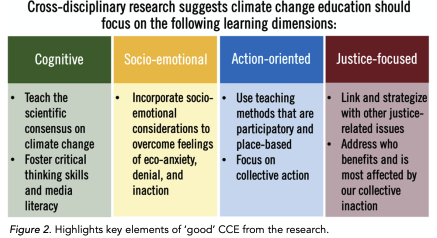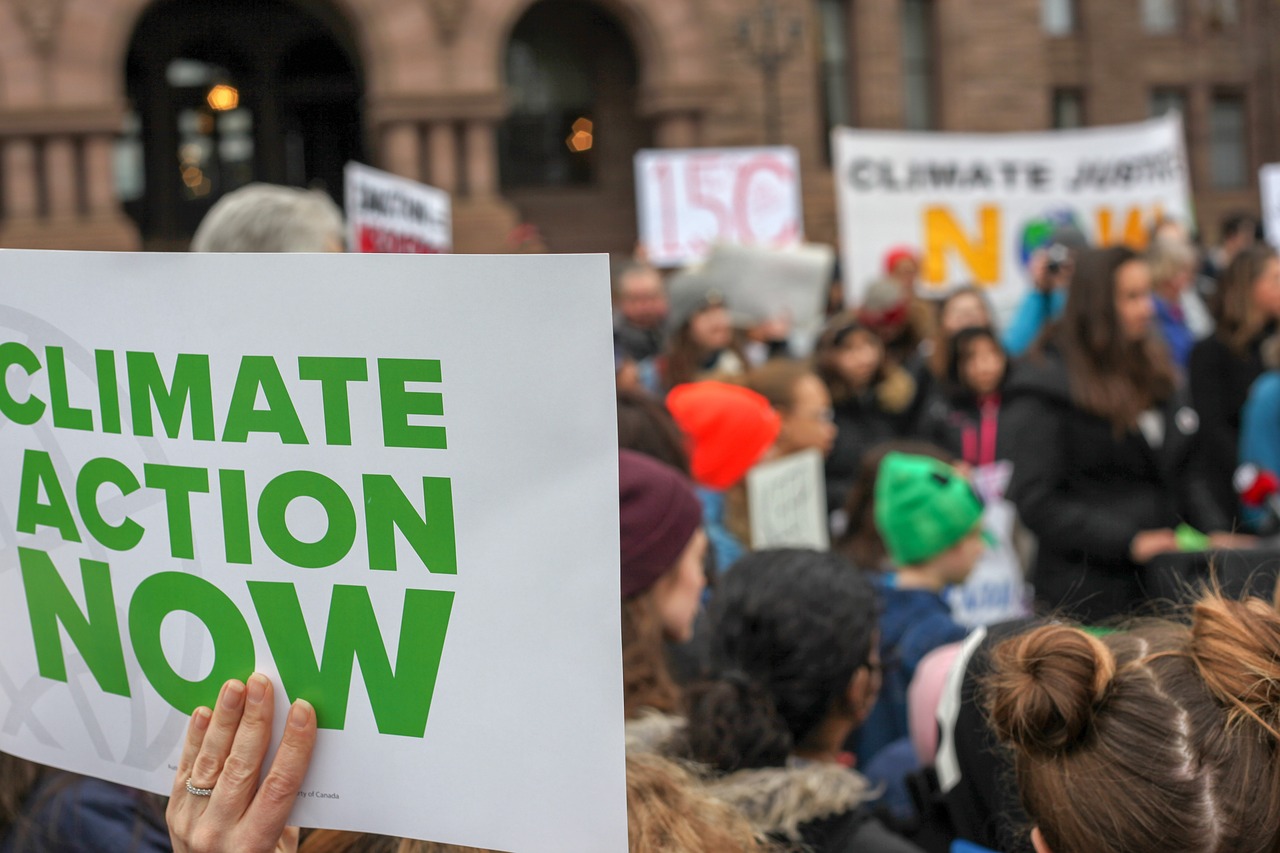
Providing practical inspiration for the transition to a just, beautiful and regenerated world.
A Canadian Registered Charity Founded in 2020.
November 27, 2023
Research shows schools are an untapped opportunity to address the climate crisis.
“Our elementary and secondary schools represent an outsized and untapped opportunity for contributing to the transition to a just, net zero future,” according to Michèle Andrews, co-founder and Executive Director of DoorNumberOne.org. “But right now, our school system is sending a very different message about the urgency and importance of climate action.” Andrews is referring to a report released earlier this month by Lakehead University Assistant Professor Dr. Ellen Field and Masters of Education candidate Sidney Howlett showing a significant lack of leadership by Canadian school boards to create climate change literacy and action in the K-12 sector.
We are all being asked to transform our buildings, community spaces, homes, and many aspects of how we live our daily lives to both reduce our carbon emissions and adapt to our overheating world. Andrews argues that our schools can and should be leading in that transformation. “Schools are the heart of their communities, with connections well beyond their students to the parents, grandparents, local businesses, and more. The ripple effect of bold school climate action has huge potential as another climate change solution, if we tap into it,” she says.
There is research to reinforce Andrews’ convictions. In 2020, researchers in California studied the impact on individuals’ climate and carbon-related choices 5 years after one university course on climate change. In their analysis, they concluded that education on climate action, if scaled up, could contribute to GHG mitigation on a level similar to other solutions like rooftop solar or electric vehicles. This research followed the individual choices those students made but notably did not account for the influence those people undoubtedly had on the family, friends, communities, and workplaces. A 2019 study demonstrated how young people can be very effective communicators and influencers with their parents about the climate crisis. Andrews hears anecdotes regularly in her work with schools about how an earnest young student takes home a passion for the environment that ultimately the parent adopts and takes into their workplaces. A study released in September 2023 showed that one third of Swiss citizens changed their behaviour as a result of Greta Thunberg’s Fridays for Future movement. These studies reinforce what we are all seeing – the significant impact that educating and activating young people can have.
It is crucial to acknowledge and address the complex emotions that students are experiencing, especially in light of a 2022 study of Canadian youth. The study reinforces the findings of a broader global study that highlights the emotional impact of the crises facing young people. Shockingly, almost half of the young Canadians surveyed believe humanity is doomed. Four out of ten reported that their feelings about climate change negatively affect their daily lives. Additionally, 71% felt angry, and 69% felt abandoned by their governments. A significant number, 39%, were hesitant to have children. Respondents to the survey suggested several strategies, including the need for youth-focused support groups, more opportunities for young people to engage in climate action, and improving climate change education in schools. Dr. Ellen Field, co-lead researcher on the study and Assistant Professor at Lakehead University, emphasized the urgent need for intergenerational work and collaboration to address the challenges faced by young people.
Dr. Field’s research on climate change education includes a recent public school board report and her contribution to UNESCO’s curriculum guidance for K-12 schools globally, expected to be released next spring.
DoorNumberOne.org has been running a pilot program, the Climate Action Accelerator Program (CAAP), since late 2021, where school teams including senior administrators, student leaders, faculty and facilities staff work together to build and begin implementing a whole school climate action plan. The intention is to create long-term systems change, including changing the paradigm for climate action from sustainability to goals of restoration, regeneration and being nature and climate positive. “Everyone in our program gets pretty excited about setting goals for making the world better – sustaining our current scenario is just not motivating,” says Andrews. The program also focuses on choosing to be hopeful, knowing that people are already making progress in so many ways. “We spend time in every workshop sharing stories that give us hope. It is an intentional practice that keeps us going despite all the negativity in the news. The work of Dr. Elin Kelsey on evidence-based hope, and her book, Hope Matters: Why Changing the Way We Think is Critical to Solving the Environmental Crisis has been perhaps the most powerful inspiration for our school teams,” asserts Andrews.
The CAAP pilot started with independent schools, and the team is now considering how that learning could apply to and serve public schools. Andrews wants to help schools walk the talk, “Board and school administrators need to recognize the credibility gap: when they are not implementing changes to their buildings, their policies, practices, and culture, it undermines the good work of the teachers trying to bring climate change education into the classroom.”
UNESCO has called for environmental education to be a core curriculum component by 2025. Andrews and others believe that even if we begin to see curriculum changes, the desired literacy outcomes will not be met if the schools do not reflect that curriculum in their actions. “When we implement climate literacy programs,” says Andrews, “we need to ensure they are more than just new lesson plans, but that students are experiencing, participating in, and leading the changes in their school buildings and culture that match the need for scale and urgency they are learning about.”
The report by Field and Howlett includes specific recommendations that will guide Board and school leaders forward to create or enhance their climate action plans.
DoorNumberOne.org is leading a set of Listening, Sharing and Learning sessions with public school board leaders over the coming weeks. “The goal is to learn more about what board decision-makers think the challenges and opportunities are, and what they need to create bold system-wide climate action plans,” says Andrews. “We are inviting others interested in supporting these plans to join us, and watch for the report we will provide summarizing the feedback. We will need everyone activated and working together to achieve the climate action goals consistent with our local, national and global targets.”
There are about 380 school boards in Canada and over 14,600 schools where over 5.6 million Canadian children and youth spend two-thirds of their days each year.
– 30 –
Media: For more information or interviews, please contact Michèle Andrews, michele@DoorNumberOne.org
Key Research Cited
1. Of the 380 school boards in Canada, only 4 have Climate Action Plans, and a dozen or so others have some plans that are consistent with a climate action plan. Media release issued on November 15th by Lakehead University.
Report here:
Field, E., Howlett, S. (2023). Climate Leadership within Canadian School Boards: 2023 Review. https://climatechangelearningcanada.org/2023-review/
They have put out a challenge to garner pledges from Superintendents across the country:
https://climatechangelearningcanada.org/superintendent-climate-action-pledge/
2. How education could be a mitigation solution equivalent to other significant mitigation strategies like rooftop solar and electric vehicles:
Cordero, E., Centeno, D., & Todd (2020). The role of climate change education on individual lifetime carbon emissions. PLOS one. The role of climate change education on individual lifetime carbon emissions | PLOS ONE
3. How educating our youth can influence their parents:
Lawson, D. F., Stevenson, K. T., Peterson, M. N., Carrier, S. J., L Strnad, R., & Seekamp, E. (2019). Children can foster climate change concern among their parents. Nature Climate Change. https://doi.org/10.1038/s41558-019-0463-3
4. The level of climate anxiety in our youth, and what they are asking for.
Galway, L., & Field, E. (2023). Climate emotions and anxiety among young people in Canada: A national survey and call to action. The Journal of Climate Change and Health. https://doi.org/10.1016/j.joclim.2023.100204
Other related research:
- Review of each province and territory and how they are including climate change education in their curricula: [NB: Article 12 of the Paris Agreement, adaptation and finance, calls for signatories to “enhance climate change education,” and UNESCO has called for environmental education to be a core curriculum component by 2025.]
Field, E., Spiropolous, G., Nguyen, A., & Grewal, R. (2023). Climate change education within Canada’s regional curricula: a systematic review of gaps and opportunities. Canadian Journal of Educational Administration and Policy.
- This report identifies what climate change education should include.
Hargis, K., & McKenzie, M. (2020). Responding to climate change education: A primer for K-12 education. The Sustainability and Education Policy Network, Saskatoon, Canada. https://sepn.ca/wp-content/uploads/2021/01/SEPN-CCEd-Primer-January-11-2021.pdf
A summary table:



by
Michèle Andrews
Co-Founder and Executive Director of DoorNumberOne.org